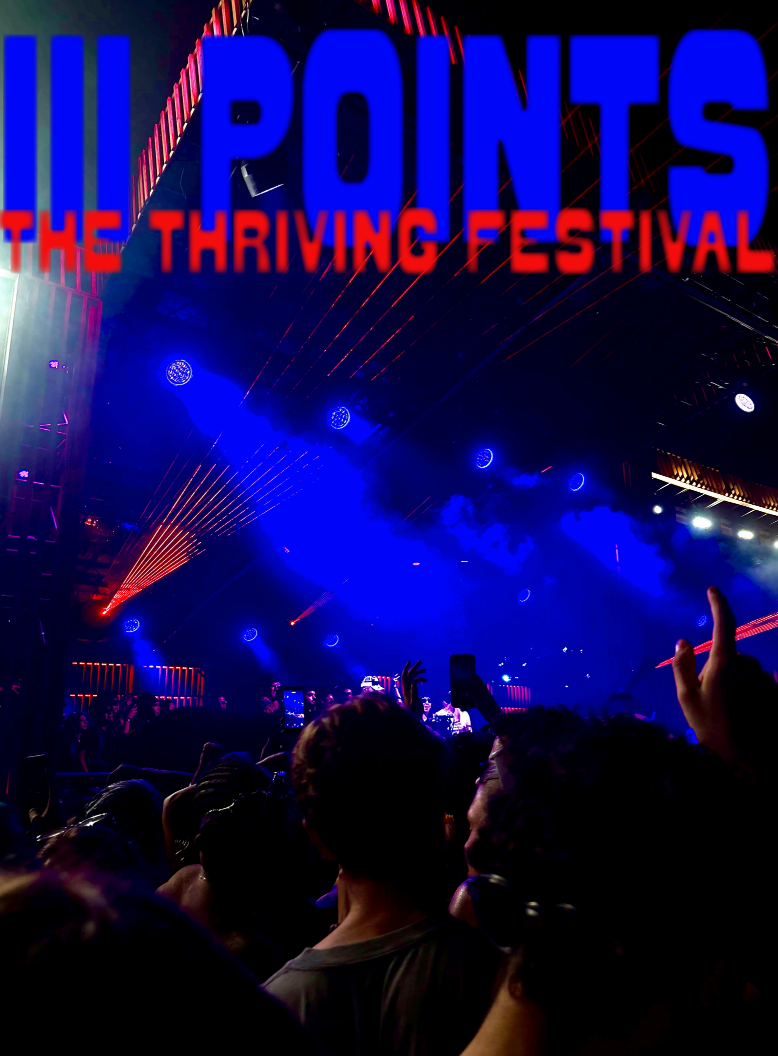SPOILER WARNING
Since the day of its announcement, I had been absolutely dying to see the horror movie “HIM.” From the visuals in the trailer to the production (partially) by my own favorite movie director, Jordan Peele, I sat in anxious wait for the first reviews to come out. They were bad. I was shocked. However, after watching it for myself in theaters, I walked away understanding why it got the negative fan reaction it did — and believing that it is an amazing, defining piece of the ever-growing and complex genre of horror.
The movie follows a star college football quarterback, Cameron Cade, after suffering an injury from a blow to the back of his head from a mysterious, demonic-looking character. This almost ends his career, until he is “saved” by his hero, “the GOAT,” Isaiah White, who invites him to train with him at a private facility and potentially be recruited to The Saviors, the best professional football team in the league with a cult following. Cameron agrees, but as the training goes on, so does a strange and terrifying ritual involving everything from off-putting blood transfusions to violent visions of the satanic figure from the beginning of the movie. In the end, and in very Peele-ian fashion, Cameron defeats Isaiah and realizes that he was being manipulated the entire time by a corrupt group of managers, NFL executives and other money-hungry people of power. He gets his revenge in a killing spree, saves himself from the demonic deal and escapes the title of GOAT.
According to my routine post-movie Letterboxd scroll through the reviews, people were unsatisfied for three main reasons: the characters were underdeveloped, the ending was too grotesque and the message was surface-level.
In my opinion, the critics with these comments missed major points of the film. The character of Isaiah White was definitely ambiguous in everything from his background to his true intentions throughout the story. I thought this not only added some suspense and mystery to the storyline, but was also a perfect representation of what his character is supposed to be. Star athlete Isaiah White is not a person — he is a mascot, a figure for his rich, powerful, white superiors to treat like a puppet in the league, using him to collect wins, fans and money. Isaiah is not a person that can be complex, he is simply one in a sequence and he is what Cameron will become if he joins the Saviors. To me, this was an excellent example of what can happen to young, naive, talented people who get taken advantage of.
The ending sequence did strike me as extremely graphic, but it did not put me off the movie as a whole. I thought the ending of “HIM” served a clear purpose, emphasizing one message in a way that will stick with its viewers: there is no middle ground with this kind of abuse and manipulation. You are either 100% against it and willing to give up any benefits it may bring you in exchange for your morality, or you are for it.
As for the message, I think it was extremely well-articulated — and that is why people did not like it. When people walk into a huge, popular horror movie, they often expect to decode some secret underlying meaning, which is fair. From “Oddity” to “Woman in the Yard,” I have spent hours dissecting the ambiguous and obscure messages that recent horror films hide in their storylines. However, my favorite part about the current state of the horror genre is that it can encompass almost any type of movie, not just off-putting and wildly complex films. “HIM” is just one of many examples I have seen of movies that scream their message at the top of their lungs and use irony, shocking visuals and exaggerated characters to force their viewers to recognize their themes in an unmistakable and incredibly effective way. “The Substance” is an example of another film that I thought did this remarkably well.
Overall, “HIM” felt like a reflection of everything going right with the horror movie industry in the past few years. It is a fantastic addition to an expansive and ever-growing genre. From Peele’s other incredible works that combined societal commentary with terror like “Get Out” and “Nope,” to terrifying suspenseful thrillers make even the bravest movie-watchers cover their eyes like “The Invisible Man,” to fabulous remakes of historical horror icons like “Nosferatu” to slow, subtle movies that give you a shocking reward just for paying attention like “Presence,” the genre is in its peak.
That is exactly what I think critics failed to acknowledge in many reviews of “HIM.” The horror genre no longer fits into one box of trying to be the most terrifying, intricate film it can be. Thanks to current brilliant directors like Mike Flanagan, Guillermo del Toro and Robert Eggers, horror can be about anything. I truly believe that in a few decades we will look back on the 2010s-2020s for horror the same way we look back on the 2000s for romantic comedies, the ‘90s for indie teen movies and the ‘80s for action blockbusters — an iconic era of creativity, experimentation and endless improvement for the genre.

















